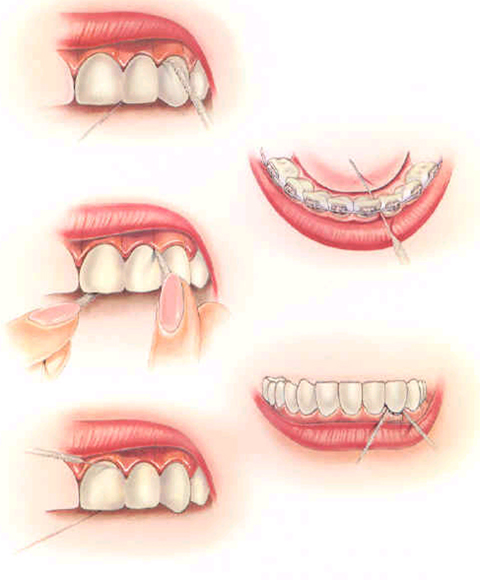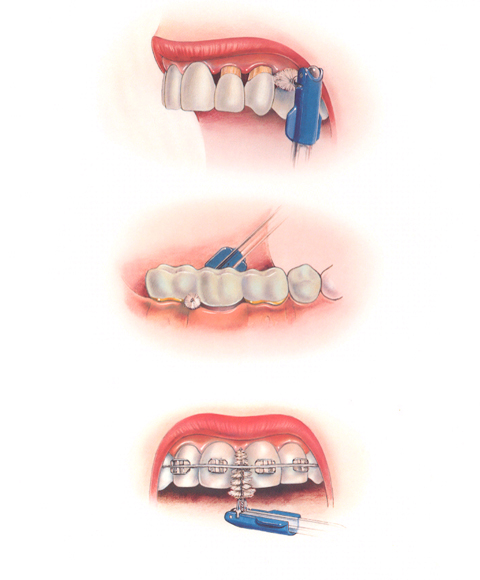Preventing Gum Disease
A person can be resistant to gum disease, or they may be highly susceptible. Most people have varying levels of resistance throughout their lifetime, which may explain why a person’s mouth can be healthy for many years, and then resistance diminishes, allowing the mouth to become infected. It is important to remember that periodontal disease is a “maintenance disease,” similar to high blood pressure or diabetes. It is never cured, only controlled. In order to control periodontal disease, both the patient and the dental team must work together.
As a person with periodontal disease, the following suggestions are very important:
1. STOP SMOKING. If you are a smoker, this may be the single most important thing you can do to control periodontal disease. Smokers are 2.6-6 times more likely to have periodontal disease than nonsmokers. This applies to all types of smoking, including cigarettes, cigars and pipe smokers.
2. Brush your teeth correctly every day. Use a soft toothbrush and angle the bristles so that they touch where the tooth meets the gums (the bristles should be felt touching the gums). Brush each area that the toothbrush touches in a gentle circular motion, brushing ten circles or strokes per area. Be sure to brush the cheek side as well as the tongue side of the teeth. Do not use a long, scrubbing stroke, and do not attempt to brush the upper and lower teeth at the same time. It should take 2-3 minutes to thoroughly brush your teeth.
3. Floss correctly every day. Dental floss reaches the bacterial plaque between the teeth where the toothbrush cannot reach. By not flossing, you are not cleaning the most susceptible part of the mouth, where bacteria thrive and strive to do the most damage. Using an 18” piece of floss, gently insert the floss between the teeth. Wrapping the floss around one tooth in the space, move the floss “up and down” along the side of the tooth 3 or 4 times until the tooth feels “squeaky clean.” Then repeat this motion on the opposite tooth in the same space. Gently carry the floss under the gumline as far as you can. Remove the floss from this space and move on to the next space. It should take only 1-2 minutes to thoroughly floss your teeth. There are many types of floss available, try several until you find one that best suits you. Floss picks, tiny single use flossing aids, are widely available and work well for those who struggle with holding the floss with their fingers.
4. Visit your dentist regularly. The most recent research indicates that patients who maintain regular periodontal maintenance (cleaning) intervals, usually every 3 to 4 months, experience less attachment (bone) loss than patients who don’t. If undisturbed, bacteria will take approximately 9-11 weeks to colonize. Once bacteria colonize, they are able to begin to infect and destroy the gums and bone around the teeth. Periodontal maintenance appointments at 12 week intervals allow the hygienist to remove and disrupt these harmful bacteria before they become destructive.



